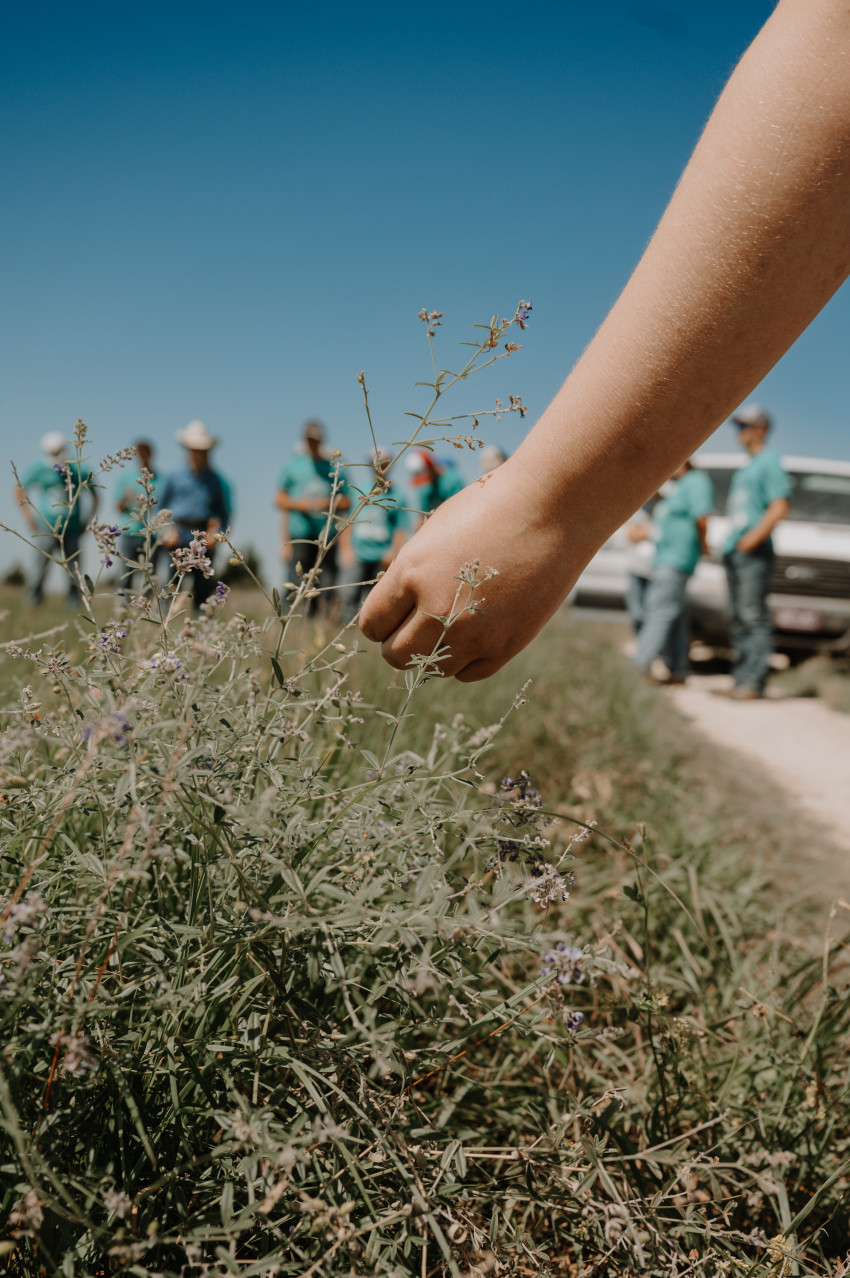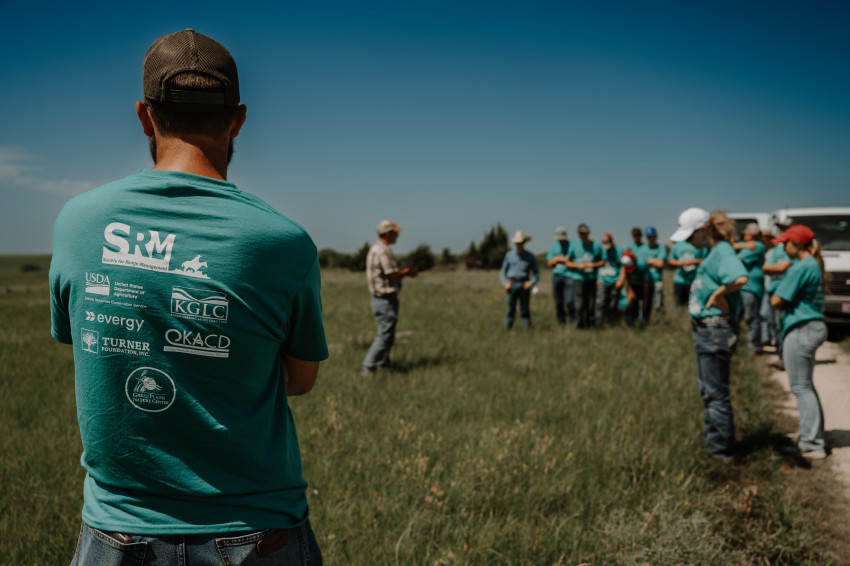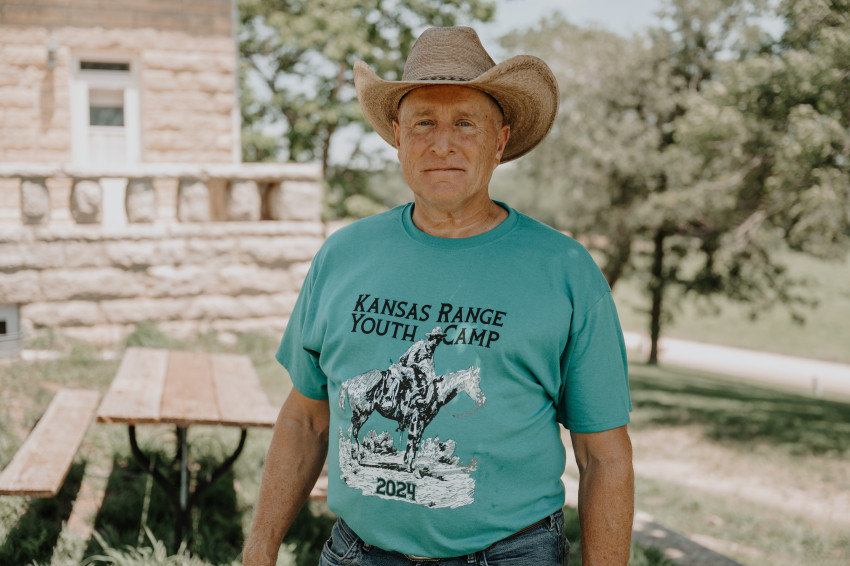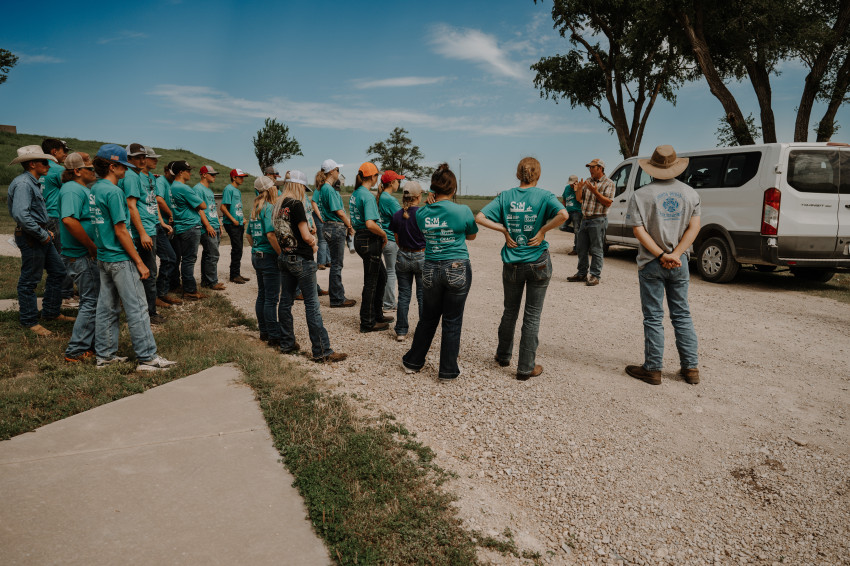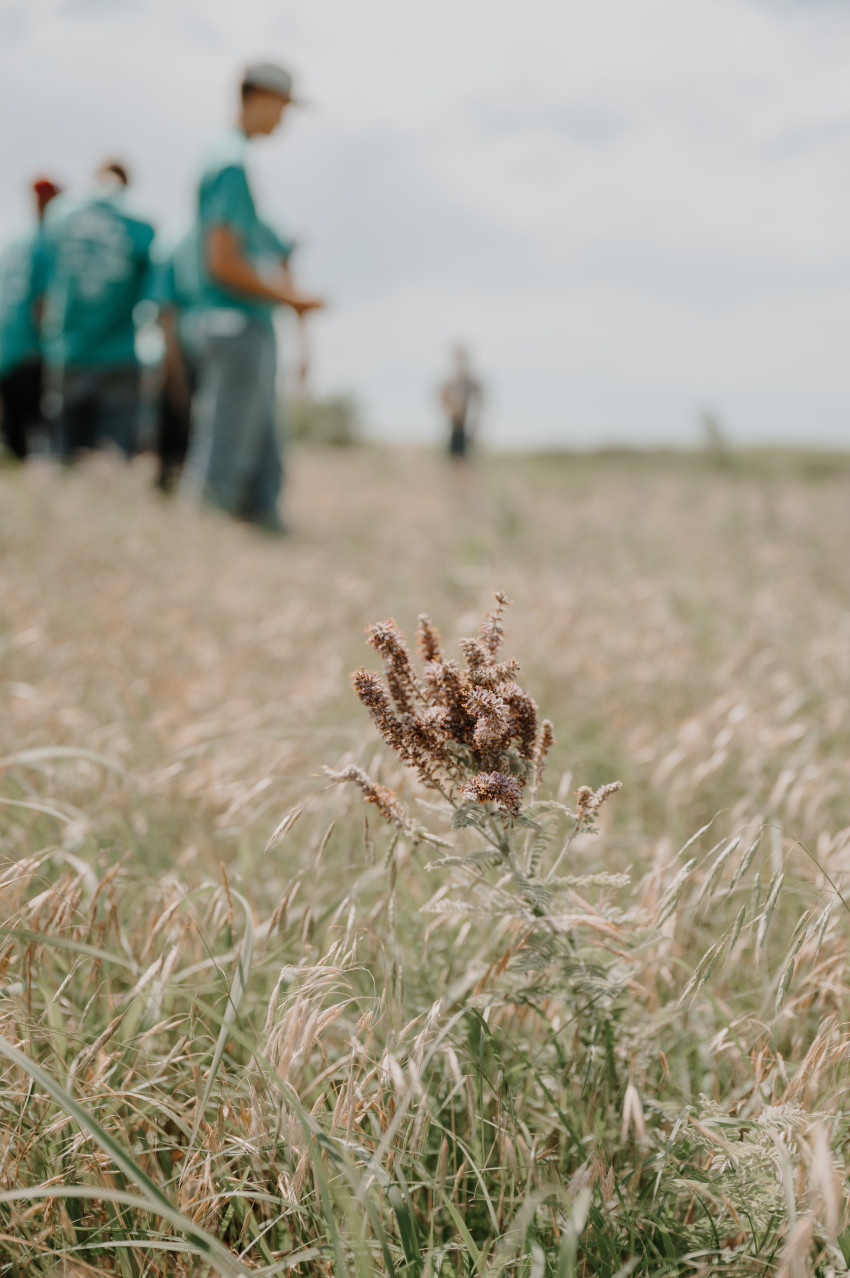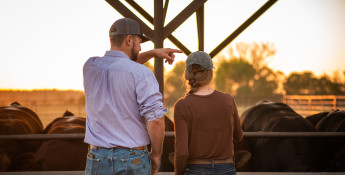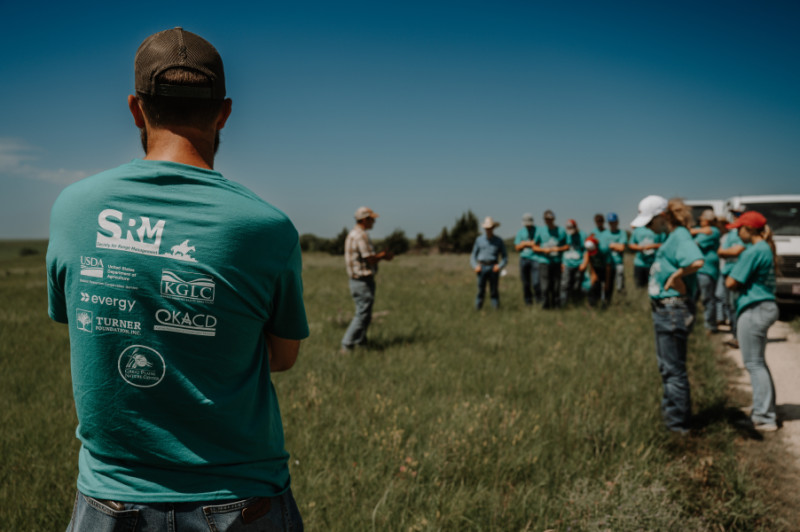By Sheridan Wimmer on August 13, 2024
Kansas Range Youth Camp empowers future land stewards
High schoolers learn the importance of rangelands in Kansas

Every summer, organizations provide additional learning opportunities outside of the traditional classroom setting. These can range from sporting camps, 4-H camps, zoo camps and more. Hands-on, experiential learning has proven to improve retention rates, enhance critical thinking skills and increase engagement among students. A unique camp designed for high school students provides a setting that encourages teens to foster their education and respect about Kansas rangelands.
The Kansas Range Youth Camp is typically held for four days and three nights in mid-June to attempt to avoid wheat harvest and county fairs. The camp has been sponsored by Kansas’ Society for Range Management for more than 50 years and is executed by volunteers. Other contributing organizations like the Kansas Grazing Lands Coalition (KGLC), Kansas Association of Conservation Districts, the Turner Foundation, Great Plains Nature Center, Evergy, Natural Resources Conservation Service (NRCS), Kansas State University Research and Extension, Kansas Department of Wildlife and Parks and more contribute to the success of the camp through volunteer leaders, sponsorships or other funding assistance avenues.
Future Stewards of the Land
High school sophomores, juniors and seniors are the primary audience for the camp, with many involved in activities like 4-H or FFA, but that doesn’t mean they have close connections with a farm or ranch.
David Kraft, who retired from NRCS and is now serving as the technical coordinator for KGLC, is a long-time volunteer of the camp. His first year helping was in 1990. He’s seen changes in the audience of the camp go from primarily farm kids to a more diverse group with varying levels of connections to agriculture.
“Over the years, I’ve seen the kids interested in our camp getting further and further from actual farming environments, but they still have interest in farming and ranching,” Kraft says. “They might live in town and have a connection to the farm through a family member or have an interest through FFA. I’ve also seen an uptick in young women interested in the camp. Years ago, it was the stereotypical male ranch kid attending and now, like with this year’s group, we have an even split between male and female attendees.”
Kaitlyn Sohnrey, a junior at Junction City High School and participant in the 2024 Kansas Range Youth Camp, attended for the additional knowledge and growth she can gain to help her with other school activities.
“My mom encouraged me to attend the camp because it’s good practice for FFA and the future career I hope to go into, which is agricultural education,” Sohnrey says. “With FFA, there’s soil judging, so I’m learning more about the different soil types at camp. My school also does an event called Envirothon, which is a contest put on through the conservation districts that involves rangeland management, forestry, wildlife and fishing.”
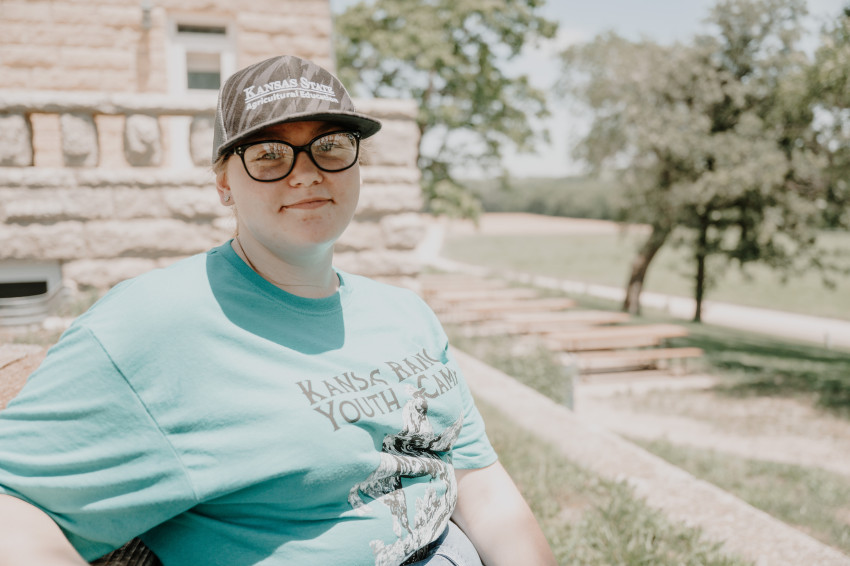 Those aspects are all taught at the Kansas Range Youth Camp. Kraft says the camp is a perfect way to showcase the importance of our grasslands and all the ways ranchers care for their land.
Those aspects are all taught at the Kansas Range Youth Camp. Kraft says the camp is a perfect way to showcase the importance of our grasslands and all the ways ranchers care for their land.
“We teach the students at the camp plant identification, which we have a contest for on the last day,” Kraft says. “We’ll also go through things like developing stocking rates, how to identify the different kinds of soils and how changes in soil structure impacts plant life. We talk about economics, prescribed burning, what threats there are to rangelands – essentially everything a cattle or livestock producer has to think about, plan for and make adjustments for in their everyday life, we teach it.”
Stocking rates refer to the number of cattle or other livestock a rancher puts on a specific tract of land for a certain period of time. This management system helps improve animal performance, grass and forage availability and the overall health of the land and soil.
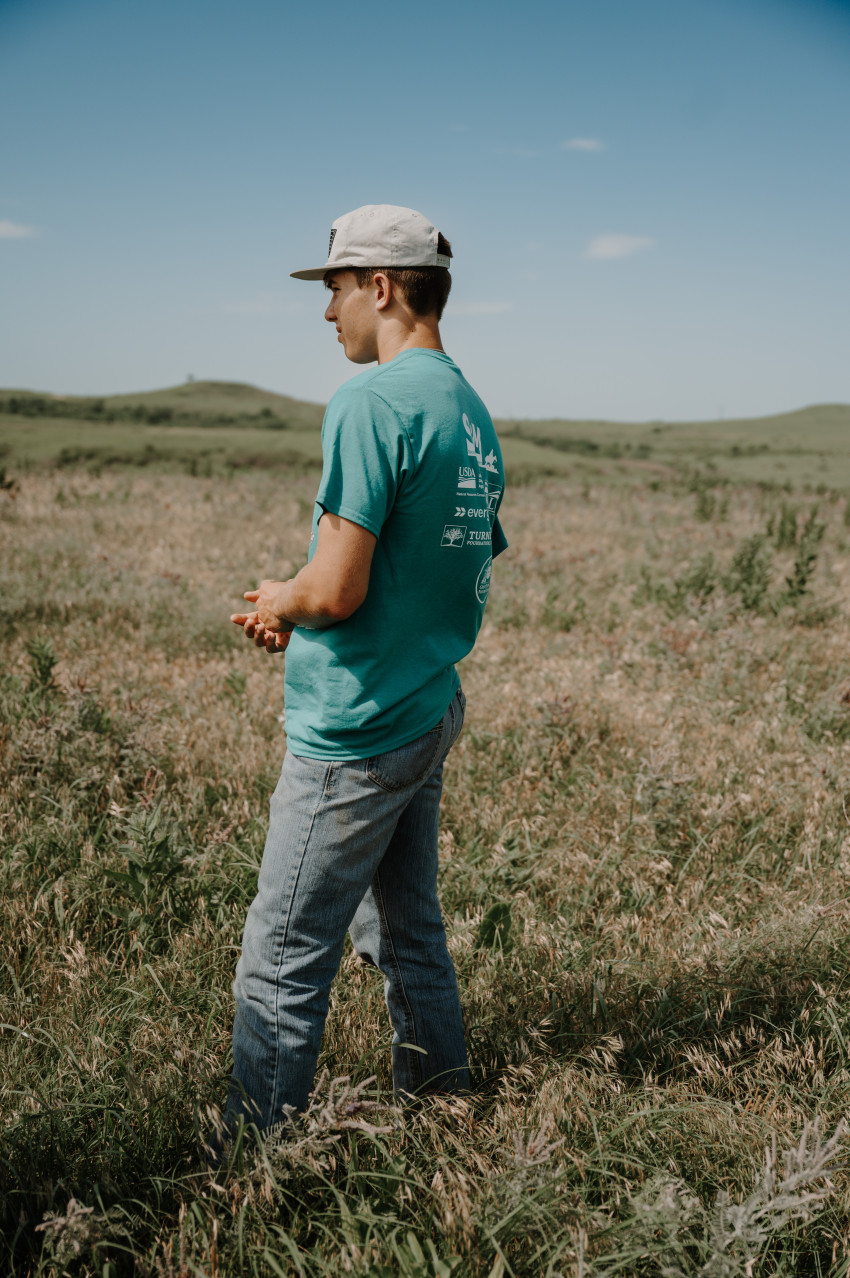 Recently, the camp has included a prescribed burning demo, depending on the wind speeds the day of the scheduled burn at the location pre-determined and planned. Students look forward to the demo, saying it’s their favorite part.
Recently, the camp has included a prescribed burning demo, depending on the wind speeds the day of the scheduled burn at the location pre-determined and planned. Students look forward to the demo, saying it’s their favorite part.
“I’m excited for the prescribed burning demo, hopefully we can still see it,” Sohnrey says, taking note of the wind that day. “But if we can’t, being on the Konza was my favorite part of camp.”
Connecting the Prairie’s Value to Everyone
The camp not only teaches valuable lessons for possible future ranchers, but it also highlights the importance of land and soil for every citizen.
“There’s value in rangelands for everyone in Kansas,” Kraft says. “From water quality to providing food and fiber, we establish the connection and importance with our campers so they can relay that message of respect to their friends and family.”
A perfect rangeland teaching tool this year was the Konza Prairie Biological Station – an 11.5-square-mile native tallgrass prairie preserve just outside of Manhattan. This land in the Flint Hills is operated by K-State and owned by the Nature Conservancy with a primary mission of long-term ecological research, education and conservation. Students participating in the Kansas Range Youth Camp were given a guided tour that included many areas not accessible to the public. With bison grazing in the distance and prairie flowers waving in the wind, these high schoolers had a once-in-a-lifetime opportunity to learn about the Flint Hills and the importance of the prairie.
Measuring Impact and Making the Future
Measuring success with the camp comes in the form of anecdotal letters of appreciation from the participants, opportunities for the students to share their experiences and the future aspirations of the attendees.
 “We’ve seen many of our previous participants attend Conservation District meetings and give a presentation about their time at our camp,” Kraft says. “We also see what kind of career path they take through the years. This camp identifies careers these students can go into and it’s refreshing to see some of them end up in the field of range management.”
“We’ve seen many of our previous participants attend Conservation District meetings and give a presentation about their time at our camp,” Kraft says. “We also see what kind of career path they take through the years. This camp identifies careers these students can go into and it’s refreshing to see some of them end up in the field of range management.”
The Kansas Range Youth Camp has a fee associated, but with help from organizations supportive of these efforts, many participants receive financial assistance to attend.
“We’re trying to get information about the camp in front of school counselors, but there are opportunities for students to gain scholarships from local conservation districts and Farm Bureau associations or other funding sources to help defray the cost to attend,” Kraft says.
Farm kid or not, the Kansas Range Youth Camp is an experience that has a wide range of vital knowledge about the importance of caring for our land.
For more information about the camp or other opportunities provided by KGLC, visit www.kglc.org.

